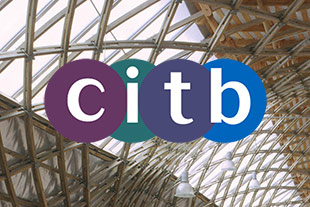CITB “Changing the way we work” to improve levy distribution
This post has already been read 3860 times!
This week CITB has been meeting with employers and federations to discuss our business plan for the next three years, which includes improving training reducing staff to return more of the levy to training.
The plan has been driven by consistent feedback from our customers, who have told us that CITB needs to change in order to become more cost-effective and relevant. Central to our plan is returning more Levy money directly back to the industry through funding and grants. Currently, CITB returns around 84% of the funds received from the industry levy.
Under the new plan, and underpinned by efficiency savings achieved within our business, we will increase this to around 90%. In addition to this direct funding, employers will also get CITB support and services, plus industry-wide initiatives, like Go Construct.
The construction industry is growing and the need for skilled construction workers remains high. This skills challenge means it is imperative that CITB changes in order to meet these needs.
Some of these changes are already taking place.
We have recently announced we will fund the development of a new scaffolding training facility at the ASET Training Academy in Aberdeen. There is a real lack of scaffolders in that region, and so this top quality training academy will tackle that shortage at the point of need. This academy is an excellent example of how CITB can work with training providers to give industry the skills it needs, rather than always delivering training directly, which can take longer and cost more.
However, in making this shift to being more of a commissioner and less of a provider, we will not remove any existing products or services until we are certain they can be effectively replaced where needed either by CITB or another provider.
In the past, employers have found it difficult to take full advantage of CITB services because they can be slow and hard to access. Conversely, many of our new digital services have been really positively received. For example, a “ How to apply for a CSCS card” YouTube video has been viewed almost 100,000 times, saving employers from having to call us to ask this basic question.
The CDM Wizard, a free app CITB developed to help employers to meet new health and safety regulations, is an industry-first and has been downloaded over 45,000 times.
Taking these successes on board, we will make basic transactions increasingly digital, freeing up time for our customer facing teams to help employers with their critical skills needs.
As a result of these changes, some roles will be phased out over the next three years and by the end of 2018, CITB’s total headcount will be reduced by around 30%, with 5% of this reduction already achieved or in train.
This is necessary to reshape and improve CITB and ensure employers get maximum value out of the Levy. We envisage that by the end of 2018, our service will be much more cost effective and in tune with what the industry and its employers want and need.
These proposed changes haven’t come about overnight. The reorganisation of CITB started in 2014 with the appointment of our CEO, Adrian Belton. The new Executive Team was announced a short time later, followed by the introduction of the new eight-member board in January 2015.
The Apprenticeship Levy, announced in last year’s Budget, has not changed the direction we are headed in as a business, but has highlighted just how necessary these changes are to enable us to keep supporting industry at this critical time.
Our business plan puts the needs of industry first and will be delivered in a measured fashion over the next three years. We will be working closely with employers, Federations and trade associations in the coming months to get it right.
Source CITB


